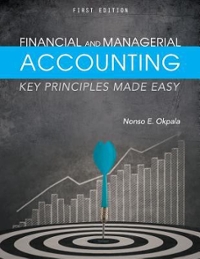a. UECM2443/UECM2444 Financial Economics 1 examination is around the corner. You and your friends decided to form a small study group to discuss and revise on this subject. However, they are having argument when they are discussing the topic related to arbitrage opportunity on options. Some European call and put prices of a stock are shown in Table 1: Strike Price Call Premium Put Premium $40 $11 $3 $50 $6 $8 $55 $3 $11 Table 1. All six options have the same expiration date. Alex tells everyone that no arbitrage opportunities can arise from these prices. Joyce disagrees with Alex. She argues that one could use the following portfolio to obtain arbitrage profit: Long one call option with strike price 40; short three call options with strike price 50; lend $1; and long some calls with strike price 55. Edmond disagrees with Alex and Joyce. He claims that the following portfolio can produce arbitrage profit: Long 2 calls and short 2 puts with strike 55; long 1 call and short 1 put with strike price 40; Lend 2; and short some calls and long the same number of puts with strike price 50 Kevin agrees with Joyce and disagrees with Edmond. Besides that, he claims that using the following portfolio can produce arbitrage profit: Long 3 40-50 call bull spreads and long some 50-55 call bear spreads. Nicholas disagrees with Alex and Edmond. He claims that by changing the 50-Call premium from 6 to 5, then there will be no arbitrage opportunity from these call prices. Wilson agrees with Nicholas and he claims that long a call bull spread from the options listed in the above Table 1. will produce arbitrage profit. You are trying to solve their argument. Determine whose statement is correct/incorrect. Justify your answers by demonstrate the arbitrage and explain it briefly. Hence, determine which of the convexity rule(s) is/(are) being violated and what spread position would you use to affect the arbitrage. (30 marks) a. UECM2443/UECM2444 Financial Economics 1 examination is around the corner. You and your friends decided to form a small study group to discuss and revise on this subject. However, they are having argument when they are discussing the topic related to arbitrage opportunity on options. Some European call and put prices of a stock are shown in Table 1: Strike Price Call Premium Put Premium $40 $11 $3 $50 $6 $8 $55 $3 $11 Table 1. All six options have the same expiration date. Alex tells everyone that no arbitrage opportunities can arise from these prices. Joyce disagrees with Alex. She argues that one could use the following portfolio to obtain arbitrage profit: Long one call option with strike price 40; short three call options with strike price 50; lend $1; and long some calls with strike price 55. Edmond disagrees with Alex and Joyce. He claims that the following portfolio can produce arbitrage profit: Long 2 calls and short 2 puts with strike 55; long 1 call and short 1 put with strike price 40; Lend 2; and short some calls and long the same number of puts with strike price 50 Kevin agrees with Joyce and disagrees with Edmond. Besides that, he claims that using the following portfolio can produce arbitrage profit: Long 3 40-50 call bull spreads and long some 50-55 call bear spreads. Nicholas disagrees with Alex and Edmond. He claims that by changing the 50-Call premium from 6 to 5, then there will be no arbitrage opportunity from these call prices. Wilson agrees with Nicholas and he claims that long a call bull spread from the options listed in the above Table 1. will produce arbitrage profit. You are trying to solve their argument. Determine whose statement is correct/incorrect. Justify your answers by demonstrate the arbitrage and explain it briefly. Hence, determine which of the convexity rule(s) is/(are) being violated and what spread position would you use to affect the arbitrage. (30 marks)







